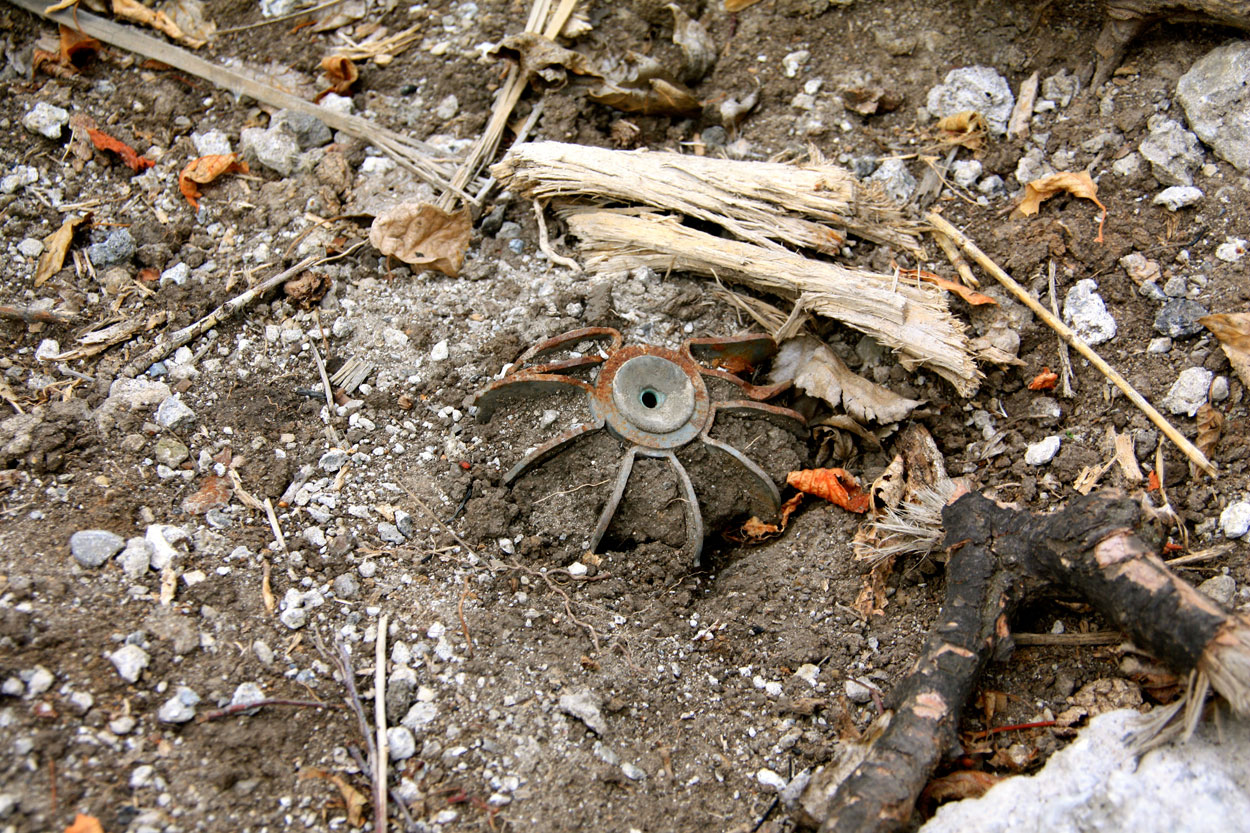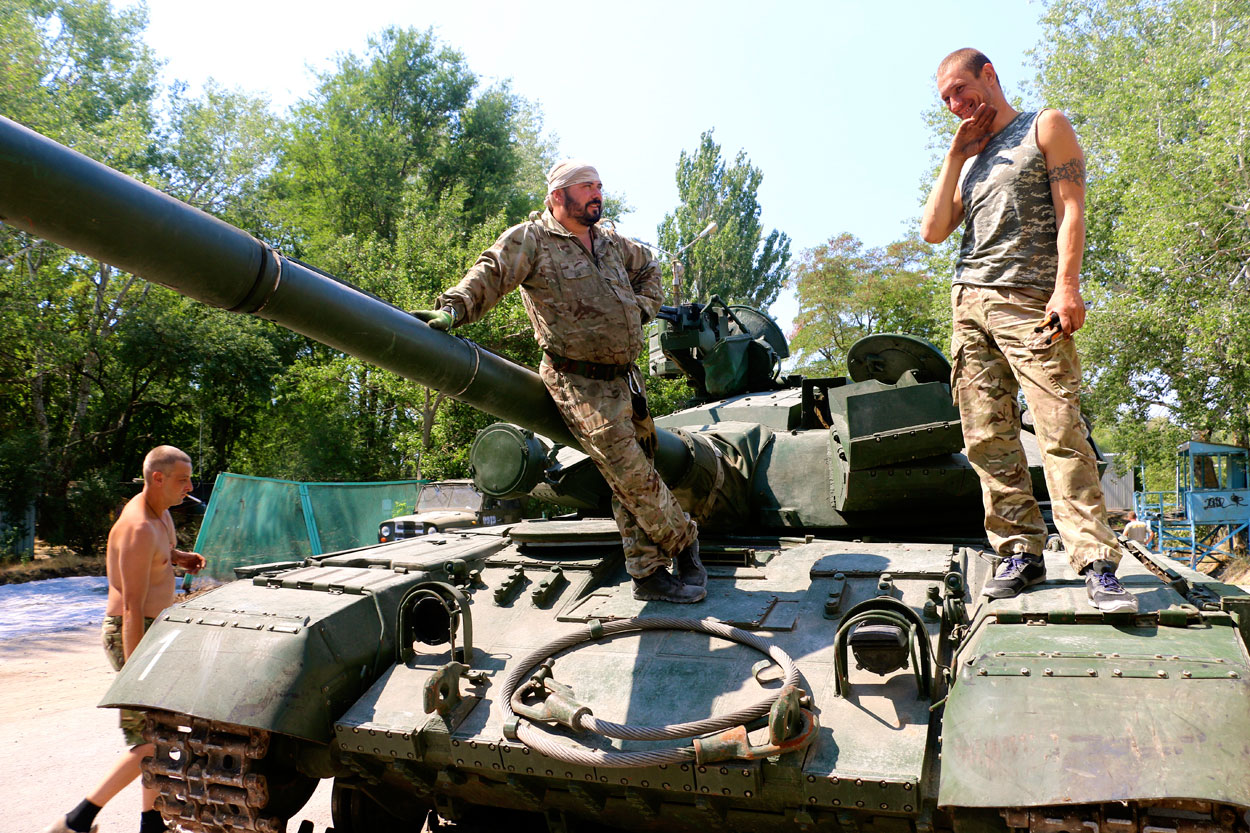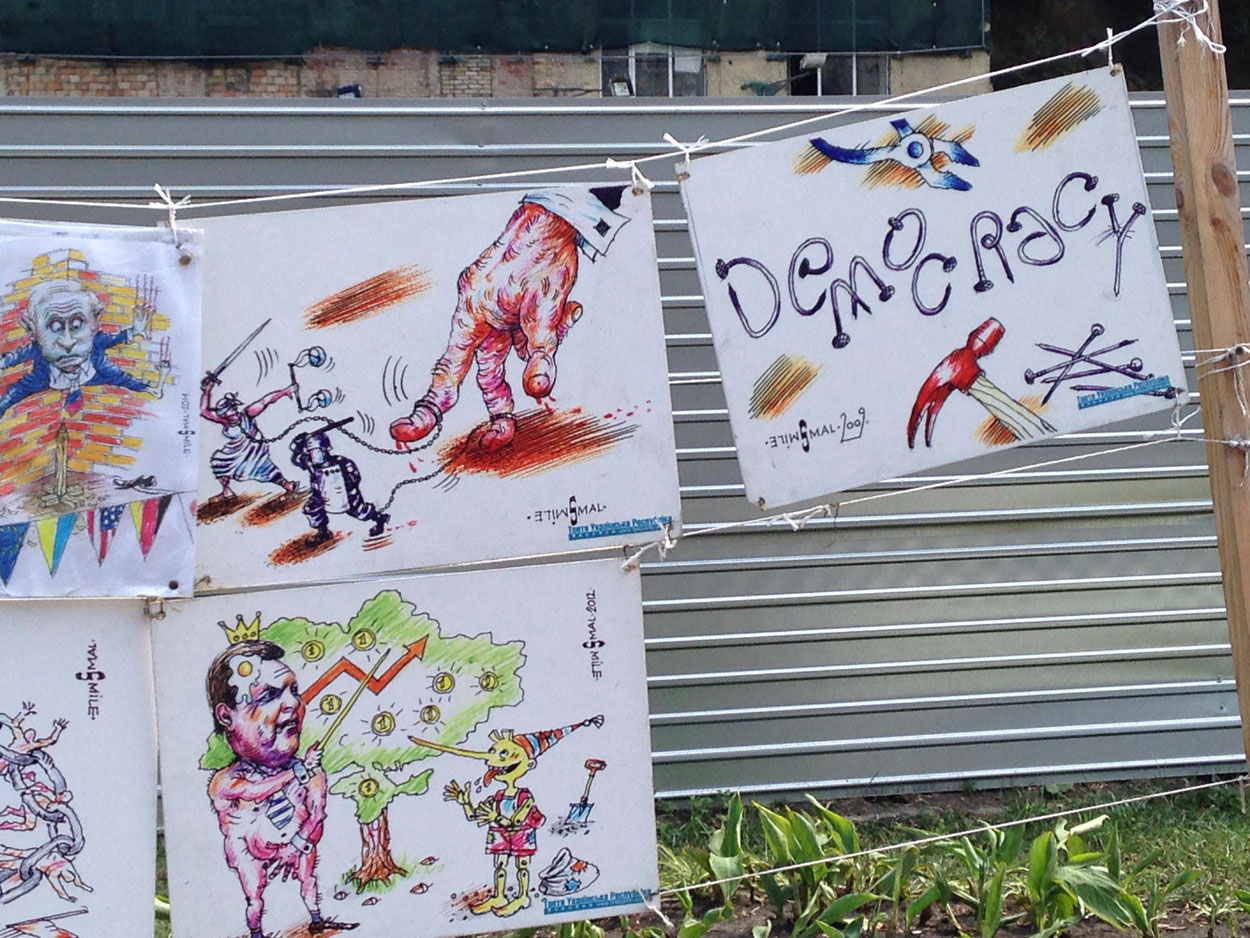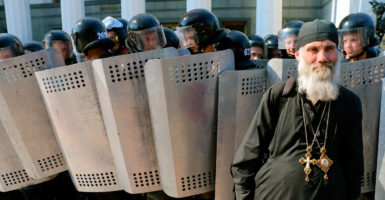KYIV, Ukraine—Believe it or not, the ongoing impeachment drama in the United States wasn’t the biggest news story this week in Ukraine.
Rather, Ukrainians are focused on news much closer to home—the prospect of rejuvenated peace talks with Moscow to end the war in Ukraine’s embattled eastern Donbas region that has lasted five and a half years.
The news broke on Tuesday when Ukrainian President Volodymyr Zelenskyy announced his decision to accept the so-called Steinmeier Formula—a controversial measure to hold elections in the two so-called separatist territories in eastern Ukraine.
The plan was devised by German President Frank-Walter Steinmeier in 2016 when he was foreign minister, as a way to rejuvenate stalled Russo-Ukrainian peace talks.
Since taking office earlier this year, Zelenskyy has tried to resuscitate the so-called Normandy Format peace negotiation framework, which comprises representatives from Ukraine, Russia, Germany, and France. In turn, Moscow declared that Ukraine’s implementation of the Steinmeier Formula was a prerequisite for renewing those talks.
“Do we want the end of the war and the return of all Ukrainian territories? Yes,” Zelenskyy said Thursday in a nationally televised address. “Today, there is one platform where these issues can be discussed at the highest level. This is a meeting in the Normandy Format.”
Zelenskyy’s move sparked peaceful protests across Ukraine, including here in the capital city of Kyiv. War veterans in particular have been outspoken in their demand that Ukraine not back down from its long-held redline—elections will not go forward in the Donbas until all Russian troops have left the contested territory.
“As a veteran, I feel that all the achievements that were gained by our troops in this war are being traded for nothing, because based on previous conflicts in Transnistria and Georgia in 2008, where Russia was involved, you just cannot believe in Russian promises. You will lose your territory afterwards,” said Denys Antipov, 30, a combat veteran of the war in the Donbas.
Zelenskyy insists he’s not bending to Moscow’s will and that elections in the Donbas will move forward only after all Russian troops have left. He also emphasized that Ukraine’s pro-European, pro-NATO trajectory—now enshrined in Ukraine’s constitution—will not change.

“There is no capitulation. No surrender of Ukraine’s national interests. No agreements and global steps without the consent of the people of Ukraine,” Zelenskyy said in his national address. “I respect the constitutional right of every citizen of Ukraine to protest, I hear you, and believe me—I will never surrender Ukraine. At the same time, I urge everyone to consider the situation calmly and not to give in to manipulations and provocations of some persons.”
As Zelenskyy navigates his way through a tricky American political scandal—doing his best to irritate neither Democrats nor Republicans along the way—he simultaneously is trying to justify to a skeptical Ukrainian public his decision to make a major concession to Russia for the sake of peace in the Donbas.
“Ukraine has found itself in a difficult situation, but not a tragic one,” Ukrainian diplomat Markian Lubkivskyi told The Daily Signal. “Personally, I am convinced that we will be able to get out of it with dignity and even receive some benefits. It all depends on many circumstances and, in particular, the consistency, thoughtfulness, and diplomatic skills of President Zelenskyy and his team.”
So far, the U.S., Germany, and France cautiouslyhave praised Zelenskyy’s move.
“Free and fair elections require withdrawing Russian-led forces and illegal armed formations from Ukraine’s territory, and a secure environment. Russia needs to display the political will to make this happen,” the U.S. Embassy in Ukraine wrote Thursday on Twitter.
The U.S. is not party to the Normandy Format talks.
Long Time Coming
Some American media commentators say Zelenskyy is feeling the heat of Ukraine’s outsized role in the current American political drama. With bipartisan U.S. support for Ukraine potentially at risk, the line of thinking goes, Zelenskyy is hedging his bets and tacitly capitulating to Russia.
However, the truth is that Zelenskyy’s administration has mulled acceptance of the Steinmeier Formula for months as a way to re-energize peace talks with Russia.
Polling shows that a majority of Ukrainians think the war is their country’s biggest problem. So, after winning an electoral landslide over incumbent President Petro Poroshenko in April, Zelenskyy entered office on a perceived mandate to end the war.
“My position on this issue is clear and it is in line with the position of all Ukrainians: We all understand that Donbas is Ukraine,” Zelenskyy said in his speech. “Peace must prevail there, cease-fire must be completed, and foreign military formations must be withdrawn.”
In April 2014, Russian intelligence operatives and military forces engineered a separatist uprising in the Donbas region, spawning two breakaway territories. Russia ultimately intervened with thousands of its own troops, and today maintains overlordship of the two so-called separatist republics—the Donetsk People’s Republic, or DNR, and the Luhansk People’s Republic, or LNR.
A September 2014 cease-fire, named after the Belarusian capital of Minsk where it was signed, quickly collapsed. In February 2015, Ukrainian and Russian representatives signed a second cease-fire known as Minsk II. That deal remains the war’s operative cease-fire. It bans heavy weapons and airpower, and prohibits both sides from taking new ground.
However, the war never ended. Along a 250-mile-long front line in the Donbas Ukrainian troops remain engaged in daily combat operations against a combined force of Russian regulars, pro-Russian separatists, and foreign mercenaries. Europe’s only ongoing land war has become a static artillery slugfest.
More than half of the conflict’s more than 13,000 deaths have occurred since Minsk II went into effect.
Ostensibly, the two Minsk cease-fire deals outlined a pathway to peace. Yet, both deals were signed in the midst of Russian military offensives in the Donbas when Ukrainian officials were at a disadvantage and willing to agree to unfavorable terms to simply stop the bloodshed.

Today, the war’s dynamics are far different than in 2014 or early 2015. For one, it’s become a static, trench conflict rather than a mobile, mechanized fight. Also, Ukraine has rebuilt its once dilapidated regular military into a substantially more capable and lethal force.
Ukraine’s strategic military doctrine now identifies Russia as the country’s top security threat. As a result, Kyiv is rebuilding its military with the specific objectives of defending against a Russian invasion and adopting NATO standards.
Ukraine now fields the second-largest standing land army in Europe in terms of manpower—behind only Russia’s armed forces.
Notably, Ukraine has announced development of a new arsenal of missiles capable of striking deep into Russia from launch sites within Ukrainian territory. The move follows the breakdown of the Cold War-era Intermediate-Range Nuclear Forces Treaty in March, following claims from Washington that Russia had been developing and deploying missiles in violation of the pact’s limits for years.
Ukraine also has a deep bench of irregular partisan forces known as territorial defense battalions. These civilian combat units promise a protracted, guerilla conflict should Russia invade.
Today, Ukraine no longer would be a walkover for a Russian invasion force. Thus, the terms of the two Minsk deals, which Ukrainian officials essentially agreed to under duress, are particularly unpalatable now for many of Ukraine’s citizens and soldiers alike.
A July poll by the Kyiv International Institute of Sociology found that 67% of Ukrainians agree with labeling Russia the “aggressor country.”
Additionally, the Steinmeier Formula remains an enigma for many Ukrainians. A poll released Wednesday by the Kyiv-based Rating Group found that about two-thirds of Ukrainians didn’t fully understand the deal, while 23% opposed the move, and 18% endorsed it.
Consequently, Zelenskyy still has to make his case to the Ukrainian people, many of whom are resolutely distrustful of Moscow, that negotiating with the Kremlin is justified for the sake of peace.
“Every piece of Ukrainian land which was retaken in battles since 2014 until now is measured in lives,” said Antipov, the combat veteran. “We will not tolerate actions, which will lead to capitulation. We, the veterans, are ready and we will oppose those actions by any means needed. We will not tolerate actions which we consider as a high treason.”
‘Steinmeier Formula’
A Ukrainian military offensive to retake the Donbas would result in massive military and civilian casualties and devastate infrastructure, complicating the eventual reintegration of the Donbas region into Ukraine’s overall fold. Also, and no less importantly, a Ukrainian military push to retake the territory would almost certainly spur a Russian military response.
Roughly 77,000 Russian troops are deployed near Ukraine’s eastern borders, capable of launching an armored invasion within weeks. Moscow also has about 40,000 troops garrisoned in Crimea, along with sophisticated air defenses, missiles, bombers, and fighter aircraft.
Since Zelenskyy took office, the two warring camps in the Donbas have agreed to incremental pullbacks of their forces from certain places along the front lines. But the efforts have been fitful and easily reversed.
Daily fighting continues up and down the front lines. Clearly, there is not yet the requisite amount of trust shared between the two camps for either side to take the lead in making bold, de-escalatory strides.
A long road lies ahead for Kyiv to secure a durable peace with Russia. Yet there are signs that the two sides are now closer than ever to striking a deal. In particular, a large-scale prisoner swap Sept. 7 between Ukraine and Russia was seen by many in Ukraine as a positive step toward new peace talks.

According to the Steinmeier Formula, Ukraine should make the next move by allowing local elections to be held in the Donbas under the supervision of monitors from the Organization for Security and Cooperation in Europe, or OSCE, the multinational group that has been monitoring the cease-fire for years.
If OSCE monitors deem the elections are legitimate, Ukraine’s parliament would grant the Donbas territories a special status of territorial autonomy. What that autonomy would look like in practice, however, is unclear.
Ukrainian representatives for peace talks with Russia have said that implementation of the Steinmeier Formula will move forward only if Russia meets certain demands, such as respecting a complete cease-fire, completing the withdrawal of foreign troops and weapons from Ukrainian territory, and a withdrawal of all forces from the current contact line in the Donbas.
Roughly 3,000 to 4,000 Russian regulars are now in Ukrainian territory, mainly in a command and control capacity, according to Ukrainian military reports. Critics of the Steinmeier Formula say that free and fair elections are impossible in the Donbas so long as those soldiers are on Ukrainian territory.
Even if all Russian troops leave the Donbas, though, Moscow would likely retain its influence. Russia finances the two breakaway territories, has offered passports to civilians living in the Donbas, and maintains tight control over the information environment.
Moreover, Russia’s gray zone warfare toolkit—including tactics like weaponized propaganda, assassinations, and cyberattacks—would leave the Kremlin plenty of options for maintaining its de facto authority over the region.
The catch, therefore, is that if Russia maintains its sway over the separatist territories after they’ve elected representatives for Ukraine’s parliament, then the Kremlin will have achieved de facto voting rights in Ukraine’s national government. That “Trojan horse” scenario is at the root of many Ukrainians’ misgivings with the Steinmeier Formula.
“The problem is not in the Steinmeier Formula itself, about which we still know only partly. The problem is that we still have not reached a compromise altogether on what to do with Donbas,” said Oleksiy Honcharenko, 39, a Ukrainian member of parliament. “So now there are only two solutions—to lose the country or to lose the Donbas.”
Honcharenko advocated that Ukraine “freeze” the conflict and “fence off” the Donbas war zone, creating a stable security situation on par with the demilitarized zone dividing North Korea and South Korea. He also pointed to Germany as a historic example that Ukraine could emulate, noting how East and West Germany eventually reunited when the Soviet Union collapsed.

“The idea behind this is that [Russian President Vladimir] Putin’s regime will eventually fall and by that time Ukraine has to be strong to claim her territories back,” Honcharenko told The Daily Signal.
Despite the political risks, Zelenskyy’s administration has shown a willingness to go ahead with the controversial Steinmeier Formula.
The bottom line, according to the Zelenskyy administration, is that peace talks have been locked at an impasse for years and casualties continue to slowly mount. Also, foreign investors remain skittish about investing capital in Ukraine due to the war.
“Our task, the task of diplomats, unfortunately, is to negotiate, which absolutely doesn’t give us strength or pleasure, so that we can get out of the situation with the least losses,” Minister of Foreign Affairs of Ukraine Vadym Prystaiko said last week. “If you think that diplomats can agree without compromise—it is naive, and unfortunately, that won’t work.”
“Our task now is to find the art of the possible, how we can minimize our losses, to break free from the clutches of the aggressor and advance as we all decided,” Prystaiko said.
Sanctions
In 2014, the U.S. and the European Union levied punitive economic sanctions on Moscow for its invasion of Ukraine’s Crimean Peninsula and subsequent proxy war in eastern Ukraine.
Those sanctions have stood the test of time. The U.S. and the EU both have said that sanctions will stay in place until the Kremlin fulfills its commitments in implementing the Minsk agreements.
Those commitments include the withdrawal of all Russian troops from Ukrainian territory, the return of Ukrainian control over its border with Russia in the Donbas, and unhindered access for international monitors in the conflict area.
The EU and the U.S. also maintain separate sanctions on Russia for its 2014 seizure of Crimea.
For Moscow, therefore, the overarching objective of a peace deal in the Donbas is to secure sanctions relief from the EU and the U.S., some experts contend. For their part, leaders in Paris and Berlin lately have signaled their desire for détente with Russia, and so has President Donald Trump.
As a result, some quarters in Ukraine worry that Western leaders, in their haste to rejuvenate economic ties with Russia, would be willing to endorse a solution to the war that is not in Ukraine’s long-term best interests.
Ukraine is clearly on a non-return trajectory away from Moscow’s influence and toward a pro-Western future—a new reality to which the Kremlin is fundamentally opposed.

Consequently, even if a durable peace in the Donbas is achieved, it likely won’t mark the end of hostilities between Ukraine and Russia.
Looking forward, Lubkivskyi, the Ukrainian diplomat, told The Daily Signal that Zelenskyy should prioritize the maintenance of good, bipartisan relations with the U.S. as a hedge against the long-term threat posed by Moscow.
“Our state will engage in a consistent strategic dialogue with U.S. leadership, adhering to the principle of bipartisan support and engagement with the U.S.,” Lubkivskyi said. “We must understand that the sole beneficiary of the complication of Ukrainian-American relations is the Russian Federation.”



























